 Although Farm to School Month is coming to an end, the celebration doesn't have to stop! This month, we've shared stories about how schools, non-profits, State agencies, and farmers promote and engage in farm to school activities that teach kids about the source of their food. We also released the FY2018 Farm to School Grant RFA and supporting materials. In support of both Farm to School Month and Native American Heritage Month, this week, we are sharing stories about how farm to school supports the use of indigenous foods in Indian tribal communities and how partnerships are vital for farm to school success. Happy Farm to School Month!
Eskimo Potatoes, Caribou, and Fiddlehead Ferns: Alaska
Celebrates Farm to School Month with Indigenous Foods
Are you familiar with fiddlehead ferns? Furthermore, do you know that you can eat them? Well, if you’re a student in Alaska, you do thanks to this year’s Farm to School Month campaign. The Alaska Department of Natural Resources - Division of Agriculture’s Farm to School Program (FTS program) has launched a five week campaign celebrating Alaska’s bounty. With one in seven Alaska residents identifying as American Indian or Alaska Native, the campaign wouldn’t be Alaska Grown without a focus on indigenous foods.

From
October 1st to November 3rd, the FTS program celebrates
each week with a spotlight on a group of locally grown, raised, or available
foods. This multi-tiered educational campaign highlights a general food group
each week and a related food on Tuesdays and Thursdays. On Wednesdays, the FTS
program partners with NMS
to offer schools statewide educational packets exploring the history, biology,
nutritional benefits, and habitat of indigenous foods, including Eskimo potatoes, caribou, fiddlehead ferns, salmon, and
salmonberries. On Fridays, schools are encouraged to celebrate Farm to School
Month with activities, even taste tests, related to the foods highlighted
throughout the week. If you live in the state of Alaska, that might mean you
are making grilled caribou kabobs or learning that fiddlehead ferns are the
young, coiled frond of Ostrich and Lady Ferns and a great source of Vitamins A
and C.
|
It is
programs like these that have helped put Alaska on the map as a national farm to school leader. In 2015, 76% of Alaska school districts surveyed in the
USDA Farm to School Census said they are involved in farm to school, putting
Alaska in the top 10 states for participation. With inclusive campaigns that
tie communities back to their historic and cultural roots, local agricultural
education and foods are sure to continue to grow in this state.
 From Bison to Wild Rice: Oneida Nation and Wisconsin Department of Public Instruction Promote Tribal Food in Wisconsin

The Great Lakes Region is home to many tribal nations and governmental agencies who are working together to educate their communities and their youth about food, nutrition, and self-sustainability, and making it easier to include traditional foods in meals served through federal nutrition programs.
In 2015, the Oneida Nation received a Farm to School Support Services Grant to develop an aquaponics system to provide fresh nutrient-dense vegetables and/or fruits, and fish for their schools. After years of hard work, they are seeing the fruits of their labor, and celebrated their first harvest of lettuce and basil at their aquaponics greenhouse this past September.
The
Oneida Nation is working at great lengths to promote farm to school practices
by supplying produce to their schools, establishing experiential learning days,
developing a library of videos for healthy food education, and working to
support initiatives such as youth in agriculture.
|
The Oneida Nation is
working at great lengths to promote farm to school practices by supplying
produce to their schools, establishing experiential learning days, developing a
library of videos for healthy food education, and working to support
initiatives such as youth in agriculture.
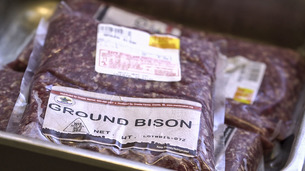 This summer, the Wisconsin Department of Public Instruction (WI DPI) (FY 16 Farm to School Support Services Grantee), held in-person trainings at the Oneida Nation High School for three Bureau of Indian Education (BIE) schools, which included meal pattern crediting, production records, and in-kitchen culinary trainings. The culinary trainings featured Oneida Nation ground bison and other native, traditional foods such as wild rice, squash, and corn.
The overall goal of their grant is to build a Farm to School Traditional Foods Toolkit and educational videos to highlight specific recipes, projects, successes, and lessons learned from trainings with the BIE schools, and to assist schools with increasing traditional foods served in the National School Lunch Program (NSLP) and School Breakfast Program (SBP).
The toolkit and videos will be available online and free to all schools across the nation to better support the inclusion of traditional foods into school menus. Keep reading The Dirt to access the toolkit when it becomes available!
|

Resources and Funding
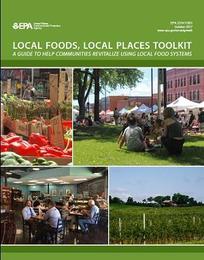 Local Foods, Local Places Toolkit: A Guide to Help Communities Revitalize Using Local Food Systems
The Local Foods, Local Places Toolkit was designed to help communities interested in developing plans for setting and achieving local food and revitalization goals. The toolkit was developed over the course of delivering the Local Foods, Local Places technical assistance and compiles best practices and lessons learned from the program. A facilitator, either from the community or hired from outside, could use this toolkit to help a community articulate its goals, engage stakeholders, and prioritize achievable actions to make progress.
The toolkit provides step-by-step instruction for planning and hosting a community workshop that produces an action plan laying out next steps for implementation. It also suggests some approaches, useful tips, and lessons in maintaining momentum, including that communities should:
- Cultivate and support champions;
- Find someone to own the plan; and,
- Help build relationships.
The Local Foods, Local Places Toolkit includes links to funding opportunities and other resources, plus detailed templates to help guide a community through the process.
|

 Annie's Grants for Gardens
At Annie's, they believe that showing future generations how sustainable food is grown can change their lives. Connecting kids to gardens helps them to start thinking more holistically about their food, their communities, and the planet. Want a garden? Apply today! Applications are due November 11, 2017 3:00PM PST.
|

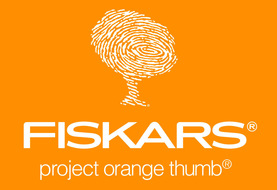
Project Orange Thumb
Fiskars Project Orange Thumb awards 30
schools across the nation each year with $3,500 in grant money and gardening
tools. Fiskars’ goal is to beautify neighborhoods, promote community
involvement, and teach the importance of sustainability and healthy eating. Apply today!
|

Farmers + Service Makes Farm To School Work in Arkansas
By: Sarah Lane and Mary Grace Stoneking (FoodCorps Arkansas Service Members) and Amy Joens (FoodCorps Arkansas Fellow)
Procuring local produce for kids to eat in schools only happens through many webs of collaborative efforts and community support. In Arkansas, dedicated community members have been influential in providing children in Arkansas schools access to fresh, healthy, grown-in-Arkansas fruits and vegetables. FoodCorps service members in Arkansas are partnering with farmers and child nutrition directors to bring energy and excitement to students about trying new foods. According to the 2015 Farm to School Census, 22% of Arkansas schools participate in farm to school programs, while 58% of schools would like to start. We hope the work that we are doing with FoodCorps will help to encourage and support connections between farmers and schools across the state and embed these practices in the school's culture.
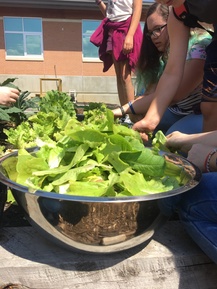 Conway Public Schools (CPS) serves 6,300 lunches a day and sourcing local food and educating students about healthy eating has become an important priority. Last year, the district was awarded a USDA Farm to School Grant and Carolyn Lewis Elementary was granted a FoodCorps Service Member to connect kids to healthy food in school.
Sharon Burgess, CPS Food Service Director, said, “We implemented the Harvest of the Month Program to accomplish both encouraging students to eat fresh fruits and vegetables, while at the same time, supporting local farmers. We have been able to procure apples, spinach, strawberries, sweet potatoes, tomatoes, and watermelon, along with other fresh produce from local farmers.” The students and staff enjoyed local sweet potatoes from Palestine, Arkansas during the Thanksgiving meal for students and their families. Sweet potato slips were created with the leftover sweet potatoes and given to all 16 schools to plant and grow in their school gardens, culminating in a school-garden-grown sweet potato taste test this year!
Even adults are learning through this program. Calvert Enterprises sourced Arkansas-grown sunflower micro-greens and spinach for the schools. Students at Carolyn Lewis Elementary helped create posters, plant sunflowers in the school garden, and gift sunflower plants to the school board who visited on the Harvest of the Month day.
|
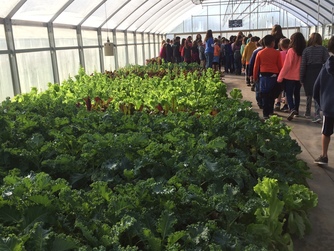 Even just one relationship can have momentous impact! In Van Buren School District (VBSD) in Arkansas, what started with an ask for advice to fix a greenhouse, grew into an invaluable relationship that helped to amplify the farm to school program at King and Tate Elementary schools.
When Leigh Ann Parks learned VBSD had FoodCorps service members working to connect students to the source of their food, she immediately took interest. Not only is she an amazing greenhouse grower with Parks Brothers and Peace Farm Organics, but she is a mom. She has worked hard to instill in her own children the importance of knowing where food comes from and how to grow it. Parks felt that all students should have access to healthy food. She said, “it is so much fresher and healthier, and you can ask the farmer directly about the farming practices used.” Parks dedicates her energy to helping Van Buren’s farm to school program by donating fresh produce, starter plants, time, and expertise in school gardens. Students tried several organic varieties of the lettuce she grew for taste tests and lettuce grown in their school garden from the transplants she donated. Some students took a field trip to the greenhouses where Parks grows the lettuce and were fascinated at what they saw. One fourth grade student said “I used to not like lettuce, but after trying different kinds of lettuce, and trying it in different ways, and seeing how fast it grows, I like it!” Cultivating this relationship with a local grower has been incredibly impactful for these Arkansas students. When they are given the opportunity to eat fresh food and try new things, they are building the groundwork for healthier futures.
As we continue to plant seeds for healthy food in school gardens, we’ll continue to cultivate seeds of service and relationships that will allow more Arkansas students and farmers to experience the benefit of connecting to food, to the earth, and to each other.
|

|